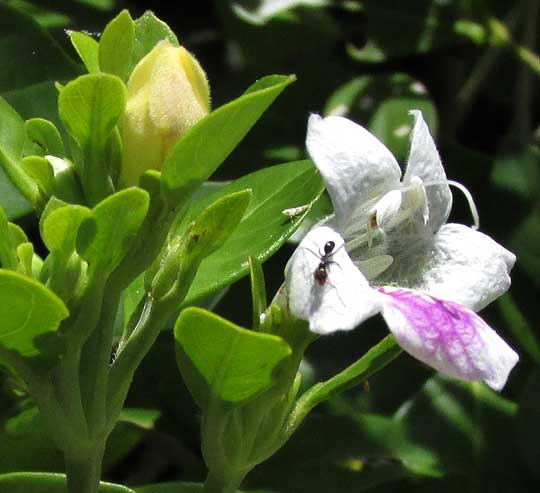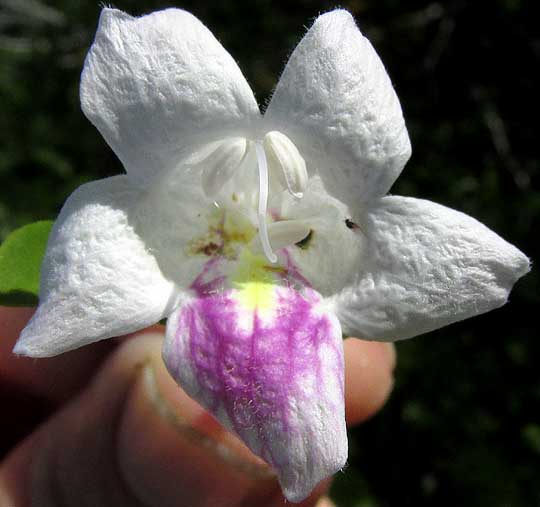Excerpts from Jim Conrad's
Naturalist Newsletter
from the January 18, 2015 Newsletter issued from Río Lagartos, on the Yucatan Peninsula's northern coast (~N21.60°, ~W88.16°), Yucatán state, MÉXICO
BRAVAISIA
Across the estuary from Río Lagartos, along the almost flat shore of the canal cutting through the slender finger of land separating the estuary from the Gulf of Mexico, for the first fifteen or so feet (4m) there's just mud and sand, either bare or carpeted with grass and other knee-high vegetation, until suddenly there's a dense, green wall of vegetation rising about ten feet high (3m). The mostly woody plants composing the wall are so intimately entangled that it's hard to make out individual plants. However, this week one plant is issuing white, inch-broad flowers (3cm) that stand out against the dark green background, as shown below:

You can see that the plant's simple leaves with entire margins (no lobes or teeth) arise two per node (opposite) and that flower clusters appear at stem tips. A closer look at a flower showing its slightly asymmetric form and enlarged, purple-splotched lower lobe is provided below:

A peep into the corolla's throat showing how nicely it's adapted for pollinators such as bees is shown below:

There you can visualize a bee alighting on the corolla's big lower lobe, then following the yellowish nectar guide down into the corolla tube, in the process leaving pollen from other flowers on the slender, stigma-tipped style dangling across the tube's entrance, while gathering new pollen from the two anthers looking like little white bananas held at the tube's ceiling.
All these features, especially the opposite leaves and the slightly asymmetrical corolla with only two anthers, lead us to the big, mostly tropical Acanthus Family, the Acanthaceae. Knowing that, it was easy to figure out that our canal-side plant was BRAVAISIA BERLANDIERIANA, for which no English name can be found. The genus Bravaisia is a small one of only three recognized species, all of which occur in southeastern Mexico and northern Central America.
Though it was hard to say whether our plant was woody or herbaceous, Thomas Daniel's 1987 revision of the genus Bravaisia says that it's a shrub or small tree up to 25 feet tall (7.5m). A number of habitats are described for it, all developed on wet silt and/or sand.
Also Daniels reports that in the Yucatan traditionally Bravaisia berlandieriana has been used medicinally for the treatment of mammary abscesses.
Otherwise there's little known about this species. It's one of those little-known, low-profile plants with such pretty flowers and foliage you'd think anyone would be happy to grow it right outside the door.